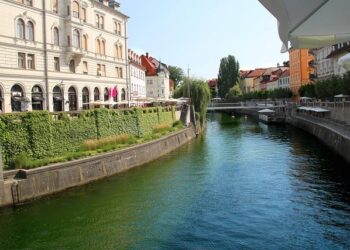Slovenia’s automotive market showed a notable upswing in the first nine months of the year, with new car registrations rising by 8.3% compared to the same period in 2023, according to the latest data from the European Automobile Manufacturers’ Association (ACEA). The increase highlights a strengthening demand for new vehicles amid a recovering economy and shifting consumer preferences. This positive trend positions Slovenia as a bright spot in the broader European automotive landscape, reflecting both domestic market dynamics and broader industry factors.
Slovenia’s New Car Market Shows Robust Growth in First Nine Months
Slovenia’s automotive market demonstrated significant resilience in the first nine months of the year, with new car registrations surging by 8.3% compared to the same period last year. According to the latest data from the European Automobile Manufacturers Association (ACEA), a total of over 45,000 vehicles found new owners, signaling increased consumer confidence and a recovering economy. This growth has been underpinned by strong demand for both traditional combustion engine models and an accelerating interest in electric and hybrid vehicles.
The detailed breakdown highlights key trends shaping the market:
- Electric vehicle registrations rose sharply, accounting for nearly 12% of total new car sales in this period.
- Diesel-powered cars continued to lose ground, representing less than 30% of registrations compared to previous years.
- Popular brands maintaining top positions include Volkswagen, Toyota, and Renault, benefiting from aggressive marketing and expanding dealer networks.
| Fuel Type | Market Share (%) | Year-on-Year Growth |
|---|---|---|
| Petrol | 58 | +5.1% |
| Diesel | 29 | -3.7% |
| Electric & Hybrid | 13 | +35.6% |
Key Factors Driving the Rise in Vehicle Registrations in Slovenia
Several pivotal elements have contributed to the 8.3% year-on-year surge in new car registrations in Slovenia from January to September. Notably, economic recovery post-pandemic has played a significant role, with increased consumer confidence and household spending power encouraging more purchases of personal vehicles. Moreover, attractive financial incentives such as low-interest auto loans and manufacturer discounts have eased access to new cars, making vehicle ownership more attainable for a broader segment of the population.
Additionally, the growing awareness around environmental issues and government policies promoting cleaner mobility have accelerated the shift toward electric and hybrid vehicles. This shift is evident in the rising demand for greener alternatives, supported by expanding infrastructure like charging stations. Below is a quick overview of the key factors:
- Economic rebound: Improved GDP growth boosting consumer purchasing power
- Financial incentives: Attractive loan terms and dealership offers
- Environmental policies: Government subsidies and emissions restrictions
- Infrastructure development: Expansion of EV charging stations nationwide
| Factor | Impact |
|---|---|
| Economic Recovery | High consumer confidence and spending |
| Financial Incentives | Increased affordability for buyers |
| Eco-Friendly Initiatives | Growth in electric/hybrid vehicle sales |
| Infrastructure | Improved accessibility to EV charging |
Recommendations for Automakers to Capitalize on Slovenia’s Expanding Market
To make the most of Slovenia’s rising demand for new vehicles, automakers should prioritize localizing their product offerings. Tailoring models to fit the preferences and needs of Slovenian consumers-such as emphasizing fuel efficiency, compact designs suitable for urban environments, and electric vehicle (EV) options-can significantly boost brand appeal. Additionally, strengthening dealership networks in key urban centers like Ljubljana and Maribor can enhance visibility and customer service, encouraging higher sales volumes in this growing market.
Investment in strategic partnerships with local firms for after-sales services and flexible financing solutions can also be a game changer. With consumers becoming increasingly price-sensitive, offering attractive leasing and credit options specifically designed for the Slovenian market will reduce purchase barriers. Below is a suggested framework for automakers to align their efforts effectively:
| Strategy | Key Actions | Expected Impact |
|---|---|---|
| Product Localization | Introduce compact, fuel-efficient & EV models | Higher consumer relevance and increased sales |
| Expanded Dealerships | Open showrooms in major cities, enhance customer experience | Better market penetration and brand loyalty |
| Financing Solutions | Offer tailored loans and leasing packages | Remove affordability barriers, attract wider buyers |
| After-Sales Partnerships | Collaborate with local service providers | Build trust and increase repeat customers |
In Conclusion
Overall, Slovenia’s new car market has shown a robust growth trajectory in the first nine months of the year, with registrations rising 8.3% year-on-year, according to the European Automobile Manufacturers Association (ACEA). This uptick reflects a sustained consumer demand and a positive outlook for the automotive sector amid broader economic recovery trends. As the year progresses, industry analysts will be closely monitoring whether this momentum can be maintained, particularly in the face of ongoing global supply chain challenges and shifting market dynamics.
















